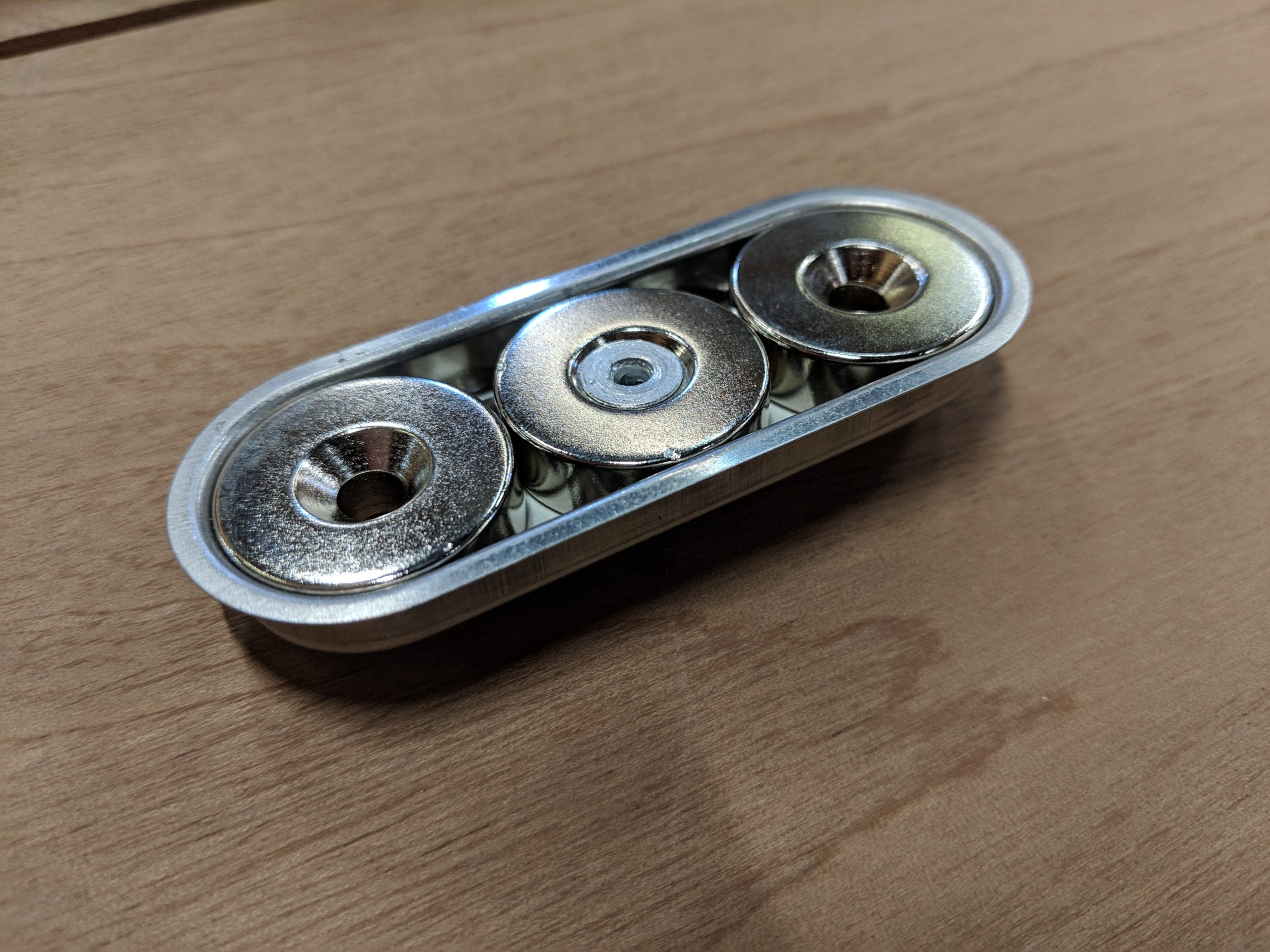Magnetic door catches are an effective way to provide concealed access points by transforming a kitchen filler panel into a door without hinges, in addition to keeping cupboard and cabinet doors closed.
There are a variety of uses for magnetic catchers, including holding a filler panel (shown above in black) open or closed while accessing stopcocks, appliance wastes, or electrical fixtures that may be hidden underneath. They can also be used to keep a door or closet open or closed as needed.
The basic idea is straightforward. A magnet or a set of magnets is on one side of the catch, while a tiny piece of steel is fastened into the unit. The second component of the device has magnetic catches that are screwed into place and remain in the place where the two connect.
To access the pipes, magnetic catches are used instead of door hinges. To get access to the work behind without being hindered by a door that won’t open all the way, just pull the panel outward from the bottom. While a plumber Bondi professional can help in regard to any plumbing issue, these door installations are carried out by construction professionals.
This space is covered by the black part between the two cabinet doors. Although it seems to be a permanent installation, the cover plate or wood may be readily removed to provide access to the stop cock hidden beneath it.
Soft closing magnetic door catch
There are some battens that hold the catch in place and then there are the steel plates that hold it in place.
You may get an even tighter grip on a cabinet door by using several magnetic catch panels in succession. As an alternative, the magnet may be placed farther back on the frame so that it doesn’t quite contact the steel plate when the attraction between a cabinet door and the frame it closes into is extremely modest.
However, the magnet will only exert a minimal amount of attraction, making it easier for the door to be opened.
Magnetic catches are fantastic for keeping doors closed, but the kitchen cupboard door hinge makes them completely obsolete since the hinge not only shuts the door, but maintains it closed with the spring pressure exerted against the cupboard door frame.
In the same way that a soft closing toilet seat allows the door to shut without slamming, soft closing kitchen cabinet and cabinet hinges enable the door to close without putting stress on its hinges. With its soft closing, it also protects the small fingers!
While somewhat more costly, they often last longer and aren’t any more difficult to install than standard cabinet hinges. This sort of drill bit is the same one used for regular cabinet hinges.
Soft closing kitchen buffers
Soft-closing kitchen drawer runners may also be a good option if you’re considering soft-closing kitchen cabinet doors. The front of the kitchen drawer is the first item to come loose in every kitchen when it is closed. And they remove all the load off of it!
Put some damper buffers inside the cabinet if you don’t mind leaving your kitchen cupboard hinges alone. But yet want them to shut with extra care.
However, the damper buffers do take up a little amount of cabinet space. But the consequences are similar to the soft-close door hinges in that they protect children’s fingers from a cupboard door that slams shut, placing less pressure on the door and its hinges.
